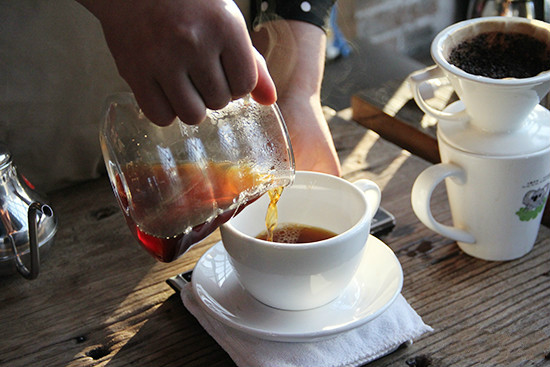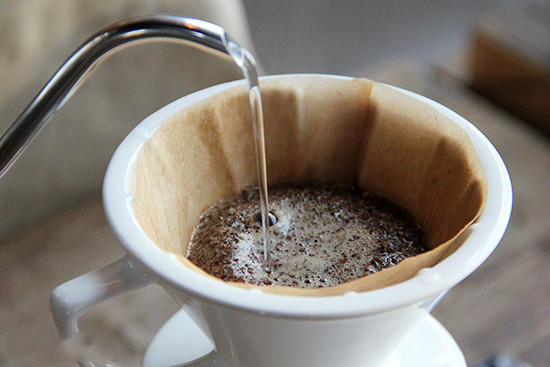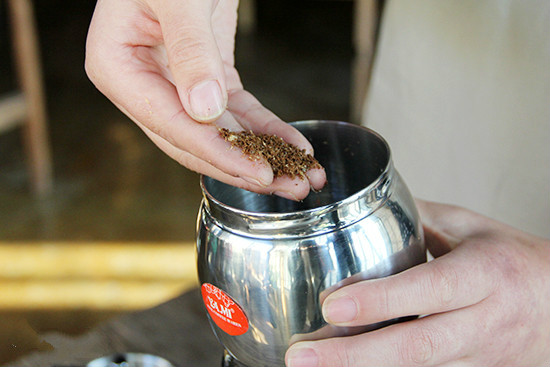Guatemala Coffee Bean roasting Latisa Manor Coffee varieties and Coffee practices

Main points: see that some friends say to buy coffee powder directly, I personally recommend people in large and medium-sized cities, it is better to buy fresh coffee beans and grind them themselves. To make a good cup of coffee, the most fundamental thing is to have fresh and high quality coffee beans.
If you buy better by hand mill, you can make sure that the coffee powder is evenly ground. If the grinding is not uniform, it will make the coffee taste not "pure". Because of the different contact area, hot water extracted from coarser coffee powder is much less than from fine powder at the same time. When the extraction time is just enough to fully extract the "good taste" from the coarse powder, it is already over-extracted from the fine powder-there will be some flavors that we do not want to appear. The main purpose of hand-made single product is to taste the original flavor of coffee, and it is to enlarge a certain characteristic of coffee flavor to taste it carefully. Therefore, we should try our best to ensure that the extraction is uniform rather than mixed with various flavors.
water. Now everyone pays attention to the soft water for drinking water, and the soft sailor tastes better. The water temperature is 85-95 degrees Celsius, too high temperature will cause coffee to have a scorched taste, and too low temperature will give coffee an unpleasant sour taste (just right coffee will also have a light sour taste, but this sour taste is pleasant, such as light fruit acidity.)
Pay attention to the warm cup. All utensils used in the process of hand brewing should be kept warm so that the taste of the coffee is warmer and moist.
The thin-nosed pot for hand flushing can be purchased separately, or you can choose some common utensils instead, as long as you ensure that the flushing flow is fine and stable. Of course, try to keep warm as much as possible.
According to my experience, 250 milliliters of coffee for every 15 grams of coffee powder is an appropriate proportion.
The rest is some simple process: put the filter paper into the filter bowl, add a small amount of water, let the filter paper "serve", and there is no air bubble between the filter paper and the filter bowl; grind the coffee powder and load it evenly (this process is called cloth powder. Some people think that the uplift in the middle of the powder pile can make better coffee, while others think that a hole should be dug in the middle of the powder pile. This depends on personal understanding); slowly flush the hot water of about 92 degrees into the coffee powder, controlling the amount of water to drop just one drop from the bottom of the powder pile; let the coffee powder fully absorb the hot water for about 40 seconds (at this time, if the coffee powder is fresh enough, you will see the coffee powder obviously expand); empty the containers that hold the coffee under the filter bowl (including the hot water for the warm cup and the drop of hot water just dropped for soaking the coffee) The water temperature dropped to about 90 degrees in these 40 seconds, just right for the start of hand flushing; slowly flushing water and drawing circles in one direction from the center of the powder pile, circle after circle. All right, drink it.
Country: Guatemala
Grade: SHB
Production area: Fraijanes,GuatemalaCity
Altitude: 1675 m
Harvest time: October to February of the following year
Treatment: washing
Variety: bourbon, Kaddura
Processing plant: Ladisha Manor
Flavor: black tea, flower scent, rich caramel feeling
Coffee was really introduced into Guatemala in 1750 by Father Jesuit, where the coffee industry was developed by German colonists at the end of the 19th century. Today, most of the coffee industry's production takes place in the south of the country. Guatemala has seven main coffee producing areas: Antigua (Antigua), Cobain (Coban), Lake Attilan (Atitlan), Vevetnango (Huehuetenango), Farahan Plateau (Fraijanes), Oriente (Oliente) and San Marco (SanMareos). Each region has its own climate change, so the coffee beans in each region have their own characteristics, but to sum up, Guatemalan coffee has a mild and mellow overall texture and elegant aroma. With similar hot and pleasant acidity such as fruit acid, Guatemala has become an aristocrat in coffee.
Volcanic soil, high altitude, humid and rainy climate, and active volcanic activity have created the unique geographical conditions of the Farahan Plateau. The Pacaya volcano in the region is the most active of the three still erupting volcanoes in Guatemala, leaving the Farahan Plateau often shrouded in a thin layer of dust and providing plenty of minerals for the soil of the Farahan Plateau. The dry period of coffee beans is the sunny season on the Farahan Plateau. Although it is often cloudy and foggy in the early morning, it will dissipate quickly, ensuring sun conditions in the area.
Important Notice :
前街咖啡 FrontStreet Coffee has moved to new addredd:
FrontStreet Coffee Address: 315,Donghua East Road,GuangZhou
Tel:020 38364473
- Prev

Introduction to the types of coffee and the practice of hand coffee in Tarazhu Diamond Mountain Manor, Costa Rica
Main points: see that some friends say to buy coffee powder directly, I personally recommend people in large and medium-sized cities, it is better to buy fresh coffee beans and grind them themselves. To make a good cup of coffee, the most fundamental thing is to have fresh and high-quality coffee beans; hand mill to buy better, can ensure that the coffee powder is uniform. If the powder is not evenly ground, the coffee will not taste good.
- Next

Sun treatment of Hope Manor in the Cauca Valley of Cauca, Colombia production of geisha / Rosa hand-brewed coffee
Main points: see that some friends say to buy coffee powder directly, I personally recommend people in large and medium-sized cities, it is better to buy fresh coffee beans and grind them themselves. To make a good cup of coffee, the most fundamental thing is to have fresh and high-quality coffee beans; hand mill to buy better, can ensure that the coffee powder is uniform. If the powder is not evenly ground, the coffee will not taste good.
Related
- Does Rose Summer choose Blue, Green or Red? Detailed explanation of Rose Summer Coffee plots and Classification in Panamanian Jade Manor
- What is the difference between the origin, producing area, processing plant, cooperative and manor of coffee beans?
- How fine does the espresso powder fit? how to grind the espresso?
- Sca coffee roasting degree color card coffee roasting degree 8 roasting color values what do you mean?
- The practice of lattes: how to make lattes at home
- Introduction to Indonesian Fine Coffee beans-- Java Coffee producing area of Indonesian Arabica Coffee
- How much will the flavor of light and medium roasted rose summer be expressed? What baking level is rose summer suitable for?
- Introduction to the characteristics of washing, sun-drying or wet-planing coffee commonly used in Mantenin, Indonesia
- Price characteristics of Arabica Coffee Bean Starbucks introduction to Manning Coffee Bean Taste producing area Variety Manor
- What is the authentic Yega flavor? What are the flavor characteristics of the really excellent Yejasuffi coffee beans?

